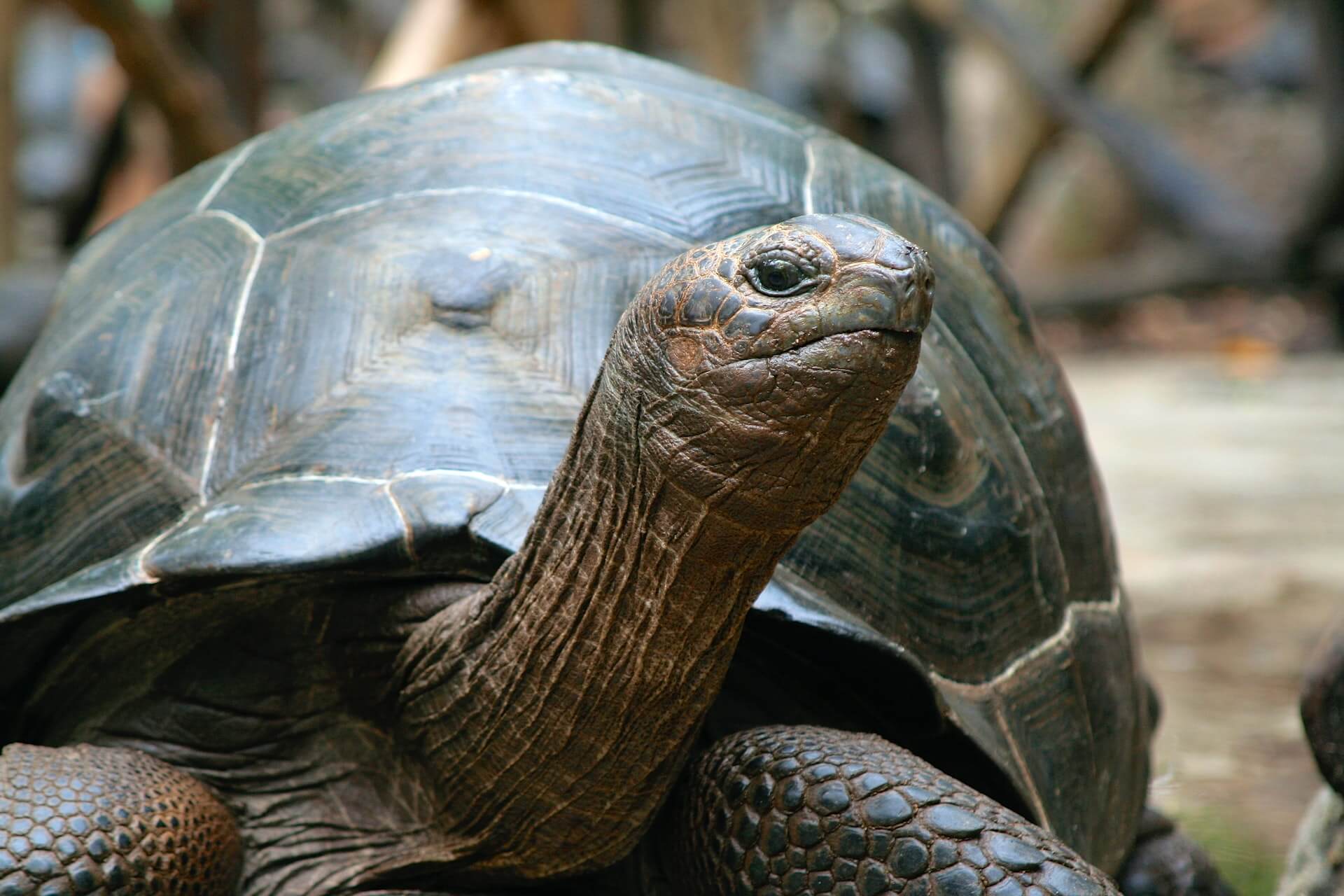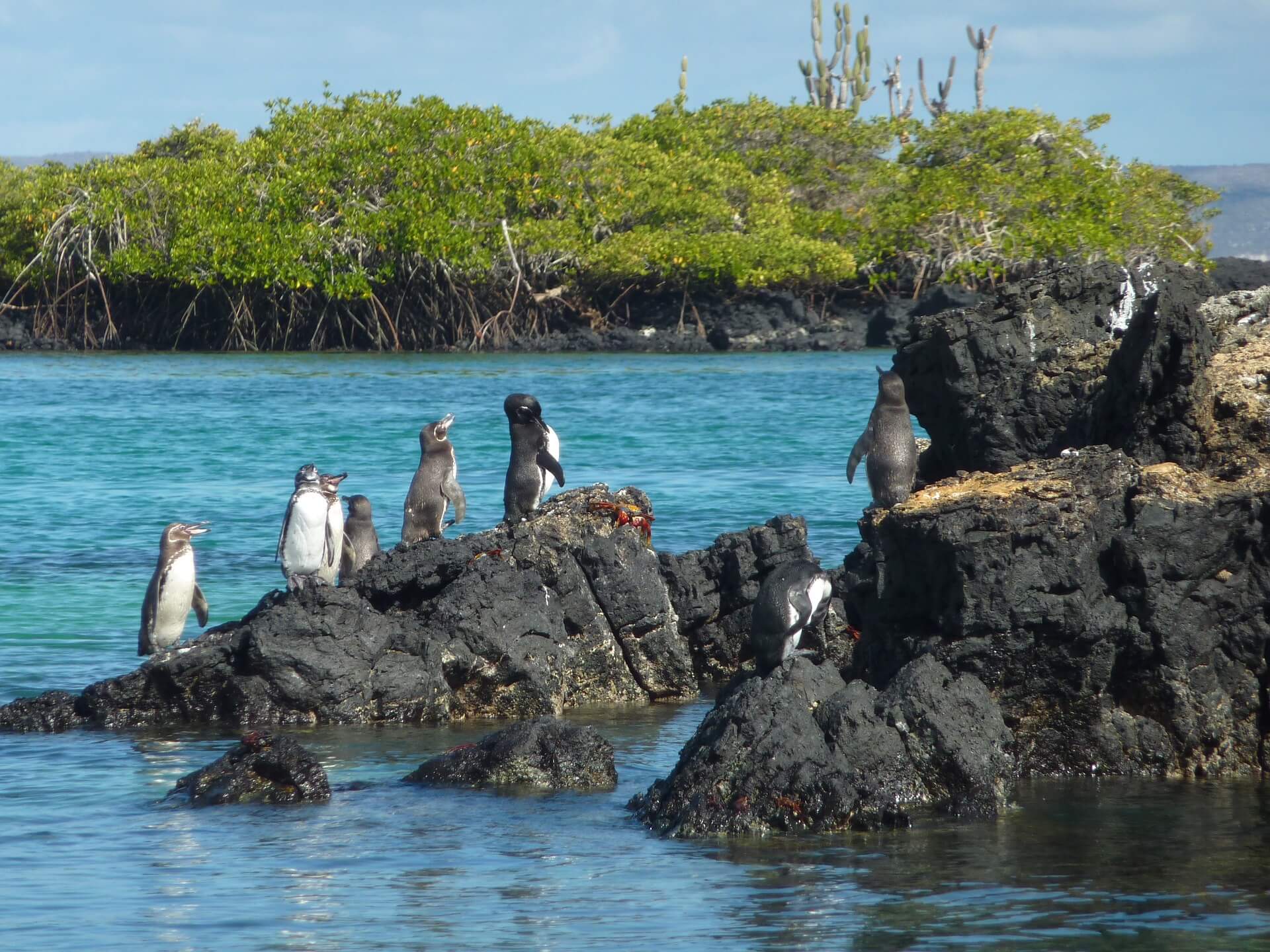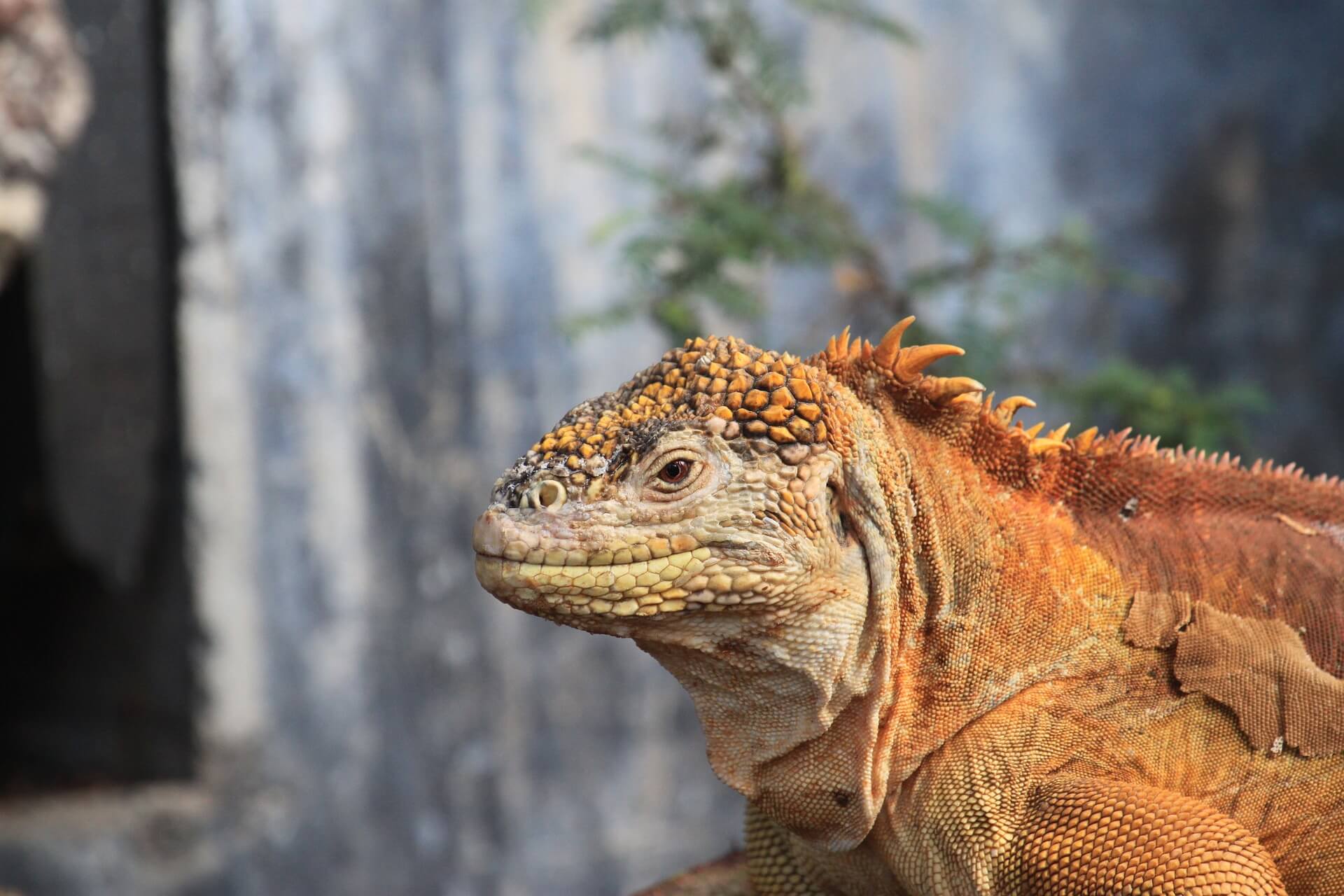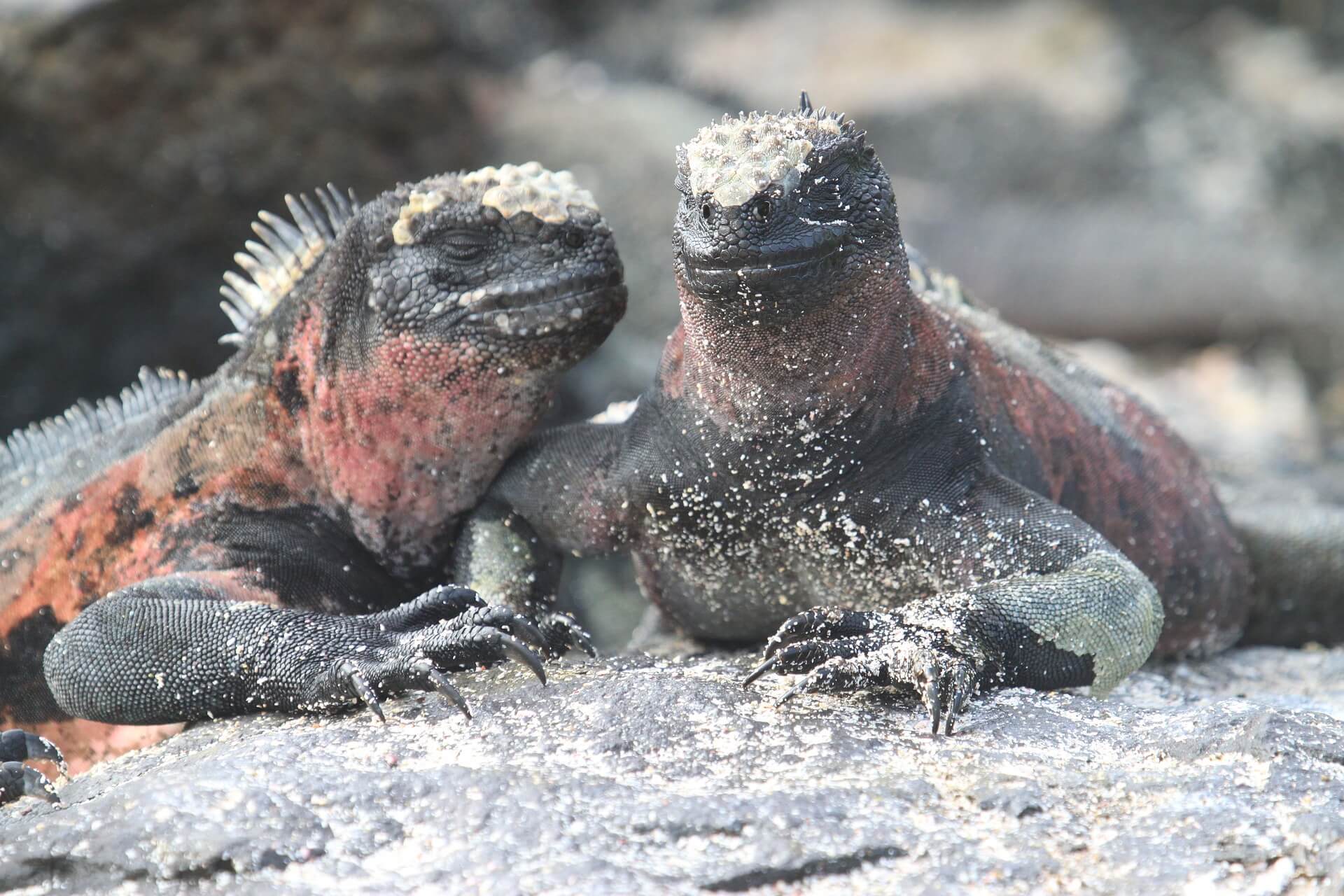When you imagine the Galápagos Islands, what do you see? Chances are, you’ll picture endless stretches of sun-kissed sands, idyllic islands, and an underwater utopia full of mysterious marine life. And while you’ll certainly find all of these in the Galápagos, you might be surprised to hear that many wonderful land creatures also dwell upon this ancient archipelago. In fact, a whole host of unique species call the majestic mountains, sensational shorelines, and flourishing flora of these islands home.
If you can’t wait to meet these animals in person, make your dreams a reality with one of our multi-day Galápagos Islands Tour Packages, or keep reading as we take you through some of our favorite land fauna.

The Galápagos Giant Tortoise
First arriving from South America more than 2 million years ago, these iconic inhabitants are so ubiquitous with the Galápagos that the islands were even named after them! Galapágo is an old Spanish word for tortoise, and as the largest of their kind in the world, these ancient animals definitely don’t disappoint.
Perhaps the hardiest creatures to call the islands home, the Galápagos giant tortoise can live for over a hundred years, and weigh up to 880 lbs. You’ll mostly find them foraging for fruit, grasses, and cacti on the larger, more humid islands like Santa Cruz and Isabela, though 12 different species are also spread across 8 of the other smaller islands.
Don’t miss the chance to find out more about these fascinating creatures on our Isabela Island Day Tour, which includes a trip to the Giant Tortoise Breeding Center, or see them in their natural habitat on our epic 8-day Discover Galápagos tour.

The Galápagos Penguin
If you’ve ever looked into The Galápagos’ wildlife, you’ve probably seen pictures of these adorable birds perched on its rocky coastlines. A fan-favorite, the Galápagos penguin is one of the smallest in the world, and the only species to live north of the equator.
Nesting mostly in coastal caves on the western islands, the Galápagos penguin is an exceptionally agile swimmer, whizzing through the water at speeds of up to 15 mph in search of sardines, anchovies, mullet, and other cold-water fish. Galápagos penguins are known to breed throughout the year – so if spotting these baby birds is on your bucket list, don’t miss the chance to catch some newborns nesting on our Bartolome Day Tour.

Land Iguanas
The vast volcanic landscapes of the Galápagos are a veritable hotbed for iguanas – including several species you won’t find anywhere else in the world. Thought to have arrived on the islands 5 million years ago, these riveting reptiles have not only adapted to their extreme environment, but even helped to engineer it by moving around the soil and plant life.
On the larger islands and their smaller islets, you’ll find two species endemic to the Galápagos: the pale land iguana and the yellow land iguana. To catch a glimpse of the recently-discovered pink land iguana, you’ll need to visit Wolf Volcano on Isabela Island.
Roughly a meter long, you’ll often spot these large lizards roaming around cactus forests, munching on grasses, leaves, berries, cacti, crabs, small insects, and even their own skin! You can also spot them in shrubs and trees, as they use their sharp claws and long fingers to climb in search of food and a peaceful place to snooze.

Marine Iguanas
Just like their land counterparts, the marine iguana also can’t be found anywhere else in the world. And, as you might have guessed from the name, it’s also the only iguana in the world that has adapted to feed in the sea. Though not very agile on land, marine iguanas are skilled swimmers. As well as staying in the water for up to an hour at a time, they can also dive as deep as 25m to forage for the marine algae that make up most of their diet.
As you might imagine, sea-snacking is a salty affair, but this proves no challenge for the marine iguana, which has adapted to sneeze the excess salt out of its snout. Keep an eye out for these cold-blooded critters basking on the shorelines of Isabela, Fernandina, Española, Floreana, and Santa Cruz and the islets around them, or check out our Sante Fe Island Tour for the chance to walk among them!

The Galápagos Fur Seal
Out of all of the wondrous wildlife on the Galápagos Islands, none is quite as cute as the Galápagos fur seal. Despite their name, they don’t actually spend much time in the sea. Instead, they prefer to rest along the shady, rocky coastlines of the western islands during the day, before venturing into the marine reserve to hunt at night.
Often living in large colonies, their penchant for shade can make them somewhat elusive, but if you’re lucky enough to see some, their broad, short heads and big doe eyes make them an adorable addition to any wildlife-spotting trip!

Excited to Meet these Amazing Animals?
If you’re ready to get up close and personal with all the wonderful wildlife the Galapago has to offer, why not take a look at our Galápagos Daily Land Tours? From snorkeling with green turtles to penguin-spotting, there’s no better way of getting acquainted with these amazing animals than in their natural habitat.
Got a little more time to spare? Make the most of it with our Galápagos Island Vacation Packages and our diving-focused Galapagos Diving Packages. We’ll take care of all the little details, so you can focus on making memories that will last a lifetime in this picturesque paradise.







